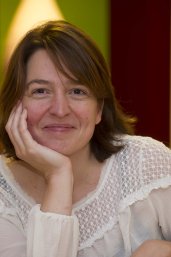Science for Life board interviews
Corné Pieterse and Saskia van Mil are the chair and vice-chair of the Science for Life community. Corné is professor at the biology department of Utrecht University, and Saskia is Professor of Molecular and Translational Metabolism at the University Medical Center Utrecht.
Science for life: Research driven by curiosity

“Prior to innovations, crucial discoveries in fundamental science are a necessity.” This is what Corné Pieterse, professor at the biology department and chair of the Science for Life community, explains when asked about the specialty of Science for Life. Curiosity is key in innovation. The Science For Life community emerged from a shared goal of three different faculties: medicine, veterinary medicine, and the department of natural sciences. The Utrecht Medical Center, Princess Maxima Center, and Hubrecht institute are also involved in this community because of their roles in fundamental life science research. Corné excitedly explains the goal of the Science for Life community. “We create connections between scientists in the field of Life Science, which in turn can greatly benefit multidisciplinary research here at the Utrecht Science Park. We offer the technology platforms necessary for bigger projects, but we also advocate for fundamental research related to societal themes within life sciences.” Science for life is seen as a foundation for other communities, as it concentrates on beneficial fundamental research.
Without fundamental science, innovation becomes a rearrangement of what you already know.
What kind of societal challenges does the Science for Life community face?
Corné: “Quite a lot, to be honest. We provide the building blocks for theme-oriented research. An example of this is in the biomedical sciences, where the question 'how does a cell work' forms a base for more translational research in how to cure cancer or immunological diseases. As fundamental science is very much dependent on high-end technologies, we also provide other communities with the technology necessary for both fundamental, translational and even clinical research." Saskia: “Science for life aims to represent fundamental science where there is not yet a direct application. In this community, research is most often not conducted from a problem-oriented approach but rather from curiosity. Good examples of science for life research include the discovery of CRISPR-CAS9 technology and the development of organoids.” Due to the Science for Life topics being driven by curiosity, the importance of fundamental research is often at risk of being overshadowed by other research projects. Corné mentions Science for Life researcher and professor Anna Akhmanova, who is a molecular biologist in the top of her field. “Anna focuses on the dynamics within cells. This knowledge can be of great importance for medicinal research regarding faulty cell division. Cancer researchers can greatly benefit from the improved understanding of cell dynamics. This is merely one example of many, when it comes to the importance of science for life research.”

Life Sciences congress and Science 4 Life cafes
Saskia van Mil addresses the successful reoccurring events that the Science for Life community organises. “We annually organize the Life Science Congress in Utrecht, which takes place in the Jaarbeurs near the central station. About 500 researchers gather to enjoy lectures from highly respected scientists in the field and share their own work in oral- and poster sessions. It is the largest gathering of Life Science researchers of the Utrecht Science Park (USP) campus.” In addition, the Science for Life community organises ‘Science 4 Life Cafes’, in which USP Principal investigators take the stage and tell about their work. These cafes are also seen as a very engaging way to enjoy and learn more about multidisciplinary research topics.
One of the big benefits of a community is that we can make much better use of different tech platforms. It also breeds better collaboration between Utrecht University and the Utrecht Medical Center.
Communities are meant to stimulate cooperation between research groups. Saskia: “One of the big benefits of a community is that we can make much better use of different tech platforms. It is also that within Science for Life, the cooperation between Utrecht University and the Utrecht Medical Center has improved significantly.” Corné adds that the cooperation in fundamental research stimulates innovation. “The community brings researchers together, and we hope by doing so to spark their creativity and to set the stage for truly multidisciplinary innovative solutions to tackle key aspects of current challenges in the life science domain (e.g. environment, disease burden) problems as the and develop innovative ideas for their research questions.

